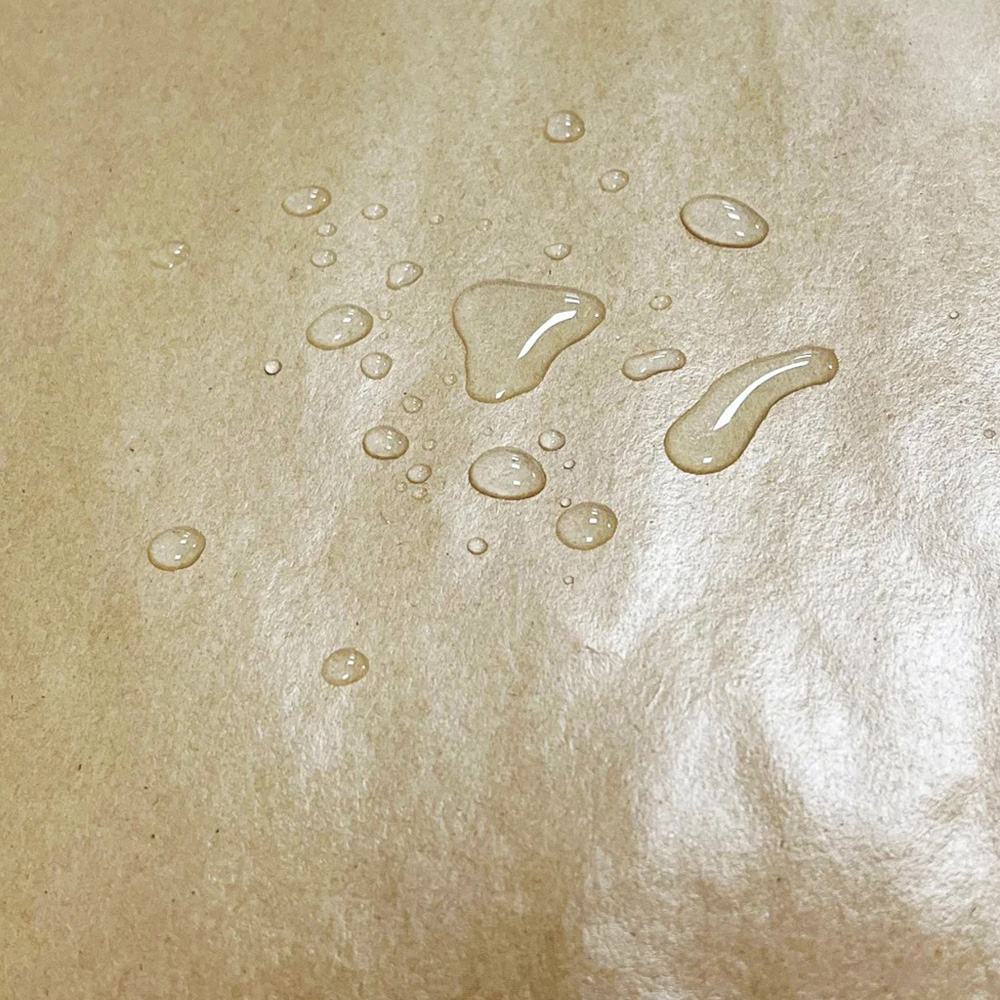Waterproof paper means paper/board that maintains strength and appearance when exposed to water, humidity, or condensation. It’s used for takeaway & cold-chain packs, chill-room/outdoor labels, moisture-prone cartons, food wraps, and rain/sweat-proof tags.
Water-resistant = shrugs off splashes/short exposure.
Waterproof = holds up during longer exposure, rain, or condensation cycles.
Common Types (from “light” to “strong” protection)
Internal sizing / water-repellent coatings (light)
Upgraded sizing or water-based coats for splash resistance. Cost-effective, very printable—great for outer cartons, bags, cup sleeves, short-term damp use.
Waxed / oil-wax coatings (medium)
Adds water & grease resistance (e.g., burger/sandwich wrap). Tactile “waxy” feel; best for short contact and moderate temps.
Dispersion-barrier (water-based) paper (medium-to-strong)
Plastic-free water-based barrier for water/grease/vapor. More recycling-friendly; good for cold-chain cartons, damp-area sleeves, high-humidity displays.
Extrusion-coated paper (PE/PP/PLA) (strong)
A plastic or bio-based film layer gives strong water holdout and heat-sealability—cup stock, takeaway bowls, cold-chain wraps. Check local recycling fit; PLA suits industrial composting setups.
Synthetic paper (PP/PET) or paper-plastic laminates (very strong)
Near “all-weather” durability for outdoor labels, chill-room tags, menus, garden markers. High tear resistance, premium price.
Typical Applications
Foodservice & takeaway: cup sleeves, bag liners, burger/fried food wrap, moisture-resistant carton wraps.
Cold chain & chillers: condensation-safe carton facings, transport labels, layer pads.
Outdoor & durable print: menus, tent/garden tags, warning cards, event wristbands.
E-commerce & logistics: rainy-season waybills, damp-storage pallet sheets and corner protectors.
Printing & Converting Tips
Printing: Water-resistant papers suit offset/flexo/UV digital; synthetics prefer UV, screen, or thermal transfer.
Inks: Use low-odor, wet-adhesion systems; test adhesion under condensation.
Varnish/film: Large dark solids benefit from anti-scuff matte/gloss.
Creasing & gluing: Strongly waterproof stocks can be stiffer/slippery—use deeper scores and higher-tack adhesive. Match heat-seal temps to the coating.
Prototyping: Run spray/immersion/condensation and hot-cold cycle tests to check warp, delam, ink rub.
Selection & Sustainability
Match the scenario:
Short splash protection → water-repellent or wax.
Long damp/condensation → dispersion barrier or extrusion-coated.
All-weather/outdoor → synthetic paper.
Recycling: Favor water-based dispersion barriers or mono-paper builds when possible.
Chemistry choice: Prefer PFAS-free hydrophobic chemistries where required.
Food contact: If touching food, provide EU/FDA/GB compliance and odor/sensory tests.
What to Tell Your Supplier (5 quick points)
Use & exposure time (rain, splash, condensation, immersion—how long?).
Temperature (chilled/frozen/hot/ambient).
Heat-seal needed? (decides PE/PP/PLA vs. water-based heat-seal).
Print & appearance (high-graphics, tactile paper, anti-scuff).
Eco & compliance (food contact, PFAS-free, recyclability/compostability, FSC®).
